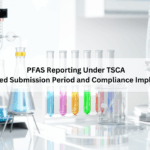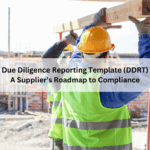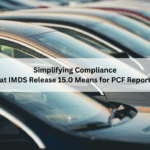IMDS rules and recommendations are the key factors for IMDS reporting. Each supplier should know about these key elements before the IMDS submission to their customers or OEMs. Apart from the IMDS guidelines, it is mandatory for the supplier to have some knowledge on OEM-based acceptance criteria to submit the IMDS report.
This IMDS OEM’s acceptance criteria provides an understanding of mandatory and optional fields in the IMDS reporting.
The ultimate goal is, the suppliers/manufacturers are not deviating from the IMDS guidelines. But they do modify them, based on their internal requirements.
This OEM’s acceptance criteria will vary with each OEM and its processes. In the IMDS portal, you can get information on OEM-specific acceptance criteria for all the OEMs. Whenever the OEM changes or update its acceptance criteria, and they will publish the information on the IMDS portal. Any supplier can easily get up-to-date information on IMDS OEM’s acceptance criteria in the IMDS portal.
Below are some of the OEM-specific fields available in the IMDS reporting, where the supplier can provide the information based on OEM acceptance criteria.
- IMDS-ID (One IMDS ID for every part number)
- Development sample
- Weight Tolerance
- Parts marking
- Trade name
- Norms / Standards
- GADSL
- All Recipient page information
The IMDS OEM’s acceptance criteria are guidelines provided by the OEMs to ensure that the data submitted to the IMDS meets their specific requirements. The importance of the IMDS OEM’s acceptance criteria are:
Compliance: The OEM’s acceptance criteria ensure that the data submitted to the IMDS meets their specific compliance requirements with environmental regulations and safety standards.
Consistency: The acceptance criteria help to ensure that the data submitted by different suppliers is consistent in format and quality. This consistency is important for effective data management and analysis.
Efficiency: The acceptance criteria provide a standard format for submitting data to the IMDS, which can reduce the time and effort required for data entry and review.
Cost savings: The acceptance criteria can help suppliers to avoid costly errors and rework by ensuring that their data meets the OEM’s requirements before submission to the IMDS.
Risk management: The acceptance criteria help to manage risk by ensuring that the materials used in vehicle components comply with environmental regulations and safety standards, reducing the risk of non-compliance penalties and safety incidents.
The supplier who is well versed in IMDS reporting, will get their report approved in their initial submission itself. So, it is very important for each supplier to know about the OEM acceptance criteria along with IMDS guidelines before the IMDS reporting. To know more about and in-depth knowledge on IMDS OEM’s acceptance criteria, you can check OEM specific information page of IMDS portal. At ComplianceXL, we ensure the IMDS report as per the requirements of both Suppliers and OEM and also comply to IMDS guidelines.
Talk to one of our IMDS Specialists today to understand whether you are adopting the OEM acceptance criteria before IMDS submission
FAQs:
Q: Why is it crucial that OEMs approve IMDS submissions?
A: OEMs use the IMDS to control the usage of hazardous materials in their products and to assure compliance with environmental requirements. For suppliers to sell their goods to OEMs, such OEMs must accept IMDS submissions.
Q: What are the consequences of not meeting OEMs acceptance criteria for IMDS submissions?
A: If a supplier’s IMDS submission does not meet an OEM’s acceptance criteria, the supplier may not be able to sell their products to that OEM. In addition, non-compliance with environmental regulations related to the use of hazardous substances in automotive products can result in fines, legal action, and damage to the supplier’s reputation.





